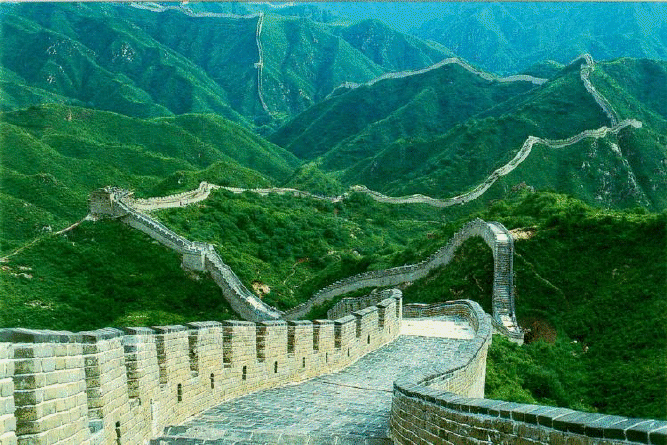Emperor Qin Shi Huang
 The Qin Dynasty was the
first central power in Chinese history. It lasted from 221 BC to 207 BC.
Although only lasting 15 years, the Qin Dynasty is such an important part of
the history of China and has been a great influence on all Chinese emperors. Only
two emperors, Emperor Qin Shi Huang, the first emperor in Chinese history, and his son
Hu Hai ruled China during the Qin Dynasty. The Qin Dynasty was eventually
overthrown.
The Qin Dynasty was the
first central power in Chinese history. It lasted from 221 BC to 207 BC.
Although only lasting 15 years, the Qin Dynasty is such an important part of
the history of China and has been a great influence on all Chinese emperors. Only
two emperors, Emperor Qin Shi Huang, the first emperor in Chinese history, and his son
Hu Hai ruled China during the Qin Dynasty. The Qin Dynasty was eventually
overthrown.
This dynasty contributed a lot to the development
of Ancient China. However, Emperor Qin Shi Haung, he was cruel, mean and caused
dissatisfaction to the people of China especially the peasants. After he died
his son became a fair and well-liked emperor of China. But, this didn't last
long because after a couple of years he also ruled the people of China in a
cruel way, not caring about the peasants or their poor families. So, that lead
to the Qin Dynasty being overthrown, and the Han Dynasty took over leadership.
The Great Wall of
China
 The Great Wall of China is one of the biggest
man made structures in the world. Qin Shi Huangdi, the first emperor of
Qin Dynasty, he built the Great Wall of China over 2,000 years ago. Qin Shi
Haungdi connected and extended four old fortification walls along the north of
China over 2500 years ago. There were armies stationed along the Great Wall of
China as a first line defense to stop the nomadic tribes (the Mongolians) north
of China. Signal fires were the early warning of attack. The Great Wall of
China is made from masonry, rocks and packed-earth. Hundreds and thousands of
men slaved to build the Great Wall and it took about three
hundred and fifty years to build. It was a very
dangerous job building the Great Wall, and millions of men
died while doing so. During the Ming Dynasty, the Great Wall was made larger,
to stretch for 6, 400 kilometers, and over a 200 year
timeline the whole wall was made longer. There were watchtowers and
cannons added too. Millions of men were needed to guard the Wall during the
time of the Ming Dynasty.
The Great Wall of China is one of the biggest
man made structures in the world. Qin Shi Huangdi, the first emperor of
Qin Dynasty, he built the Great Wall of China over 2,000 years ago. Qin Shi
Haungdi connected and extended four old fortification walls along the north of
China over 2500 years ago. There were armies stationed along the Great Wall of
China as a first line defense to stop the nomadic tribes (the Mongolians) north
of China. Signal fires were the early warning of attack. The Great Wall of
China is made from masonry, rocks and packed-earth. Hundreds and thousands of
men slaved to build the Great Wall and it took about three
hundred and fifty years to build. It was a very
dangerous job building the Great Wall, and millions of men
died while doing so. During the Ming Dynasty, the Great Wall was made larger,
to stretch for 6, 400 kilometers, and over a 200 year
timeline the whole wall was made longer. There were watchtowers and
cannons added too. Millions of men were needed to guard the Wall during the
time of the Ming Dynasty..